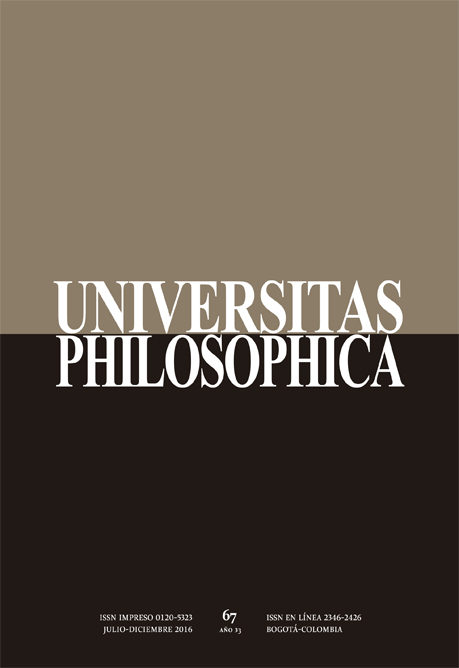Resumen
El presente artículo examina el tránsito que, desde la percepción sensible (aisthesis) hacia la imaginación (phantasía), se hace en la psicología aristotélica, específicamente en el capítulo 3 del Libro III del De Anima y en el tratado Acerca de los ensueños. Tras un primer examen del uso que hace Aristóteles de los términos aisthesis y phantasía, y de examinar las razones por las cuales adscribe esta última a la facultad perceptiva del alma, se pone de presente la ampliación que del campo de la percepción hace el Estagirita a partir de la consideración de fenómenos psicológicos como las pariciones perceptuales y postperceptuales, los engaños e ilusiones perceptivos y la llamada “percepción proposicional”. Para finalizar, se destaca la función mediador entre la percepción y el intelecto que cumple la phantasía y se distingue entre la imaginación sensitiva, una dedicada a la combinación de las imágenes y, finalmente, una imaginación de carácter racional y deliberativo.
Esta revista científica se encuentra registrada bajo la licencia Creative Commons Reconocimiento 4.0 Internacional. Por lo tanto, esta obra se puede reproducir, distribuir y comunicar públicamente en formato digital, siempre que se reconozca el nombre de los autores y a la Pontificia Universidad Javeriana. Se permite citar, adaptar, transformar, autoarchivar, republicar y crear a partir del material, para cualquier finalidad (incluso comercial), siempre que se reconozca adecuadamente la autoría, se proporcione un enlace a la obra original y se indique si se han realizado cambios. La Pontificia Universidad Javeriana no retiene los derechos sobre las obras publicadas y los contenidos son responsabilidad exclusiva de los autores, quienes conservan sus derechos morales, intelectuales, de privacidad y publicidad.
El aval sobre la intervención de la obra (revisión, corrección de estilo, traducción, diagramación) y su posterior divulgación se otorga mediante una licencia de uso y no a través de una cesión de derechos, lo que representa que la revista y la Pontificia Universidad Javeriana se eximen de cualquier responsabilidad que se pueda derivar de una mala práctica ética por parte de los autores. En consecuencia de la protección brindada por la licencia de uso, la revista no se encuentra en la obligación de publicar retractaciones o modificar la información ya publicada, a no ser que la errata surja del proceso de gestión editorial. La publicación de contenidos en esta revista no representa regalías para los contribuyentes.


